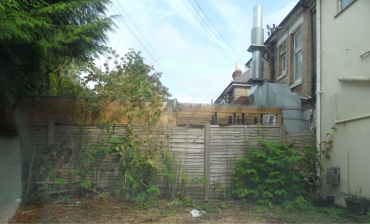Japanese knotweed (Fallopia japonica) and its sister species, giant knotweed (Fallopia sachalinensis), are the scourge of Britain. Originally introduced in the early 19th century as ornamental and fodder plants, and celebrated for their amazing ability to survive the slopes of active volcanoes in their native Japan, these species have become a nightmare for developers and house-owners alike.
Japanese knotweed and giant knotweed are so invasive that a mere fleck of green matter can grow into a new clonal colony. Its intensive network of rhizomes can penetrate rock, concrete, tarmac, bricks and mortar, with devastating consequences for building stability, value and mortgageability. The rhizome system extends up to 3m deep, and normally extends laterally into soft soils, but when confined, it will attempt to find its way through whatever materials it encounters.
There is a thriving trade in knotweed control in the UK, and with legal and other government restrictions on dealing with knotweed problems, the industry is worth many millions of pounds. The most effective eradication method is repeated application of herbicide, applied above ground, over several years. To physically extricate a knotweed colony requires careful and dramatic excavation to a depth of at least 3m, and extreme care over the disposal of the arisings.
CGO Ecology Ltd offers knotweed identification and referral advice. During reptile and amphibian surveys and mitigation projects, we often see knotweed colonies. Some of these are unknown to the client; others are known and in the process of eradication. Please contact us if you think you have a knotweed problem. (Any knotweed presence is a problem, and the earlier it is sorted out, the better).

Japanese knotweed infesting a back yard, unbeknown to the owner, in Charminster, Bournemouth. Left untreated for too long, it could result in the neighbouring buildings being condemned.

